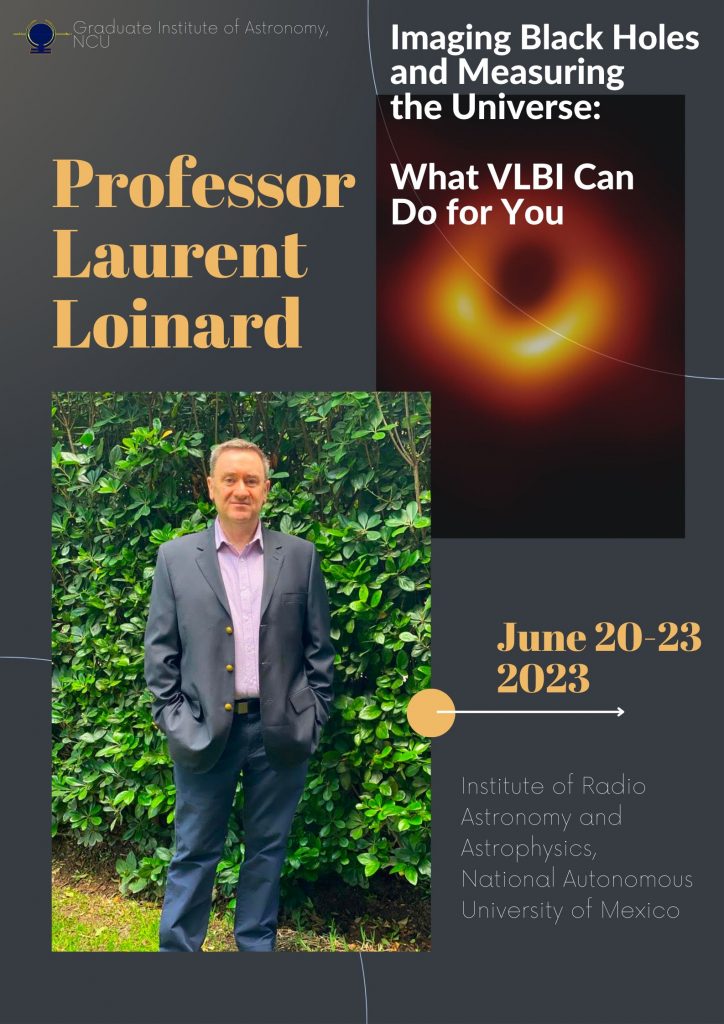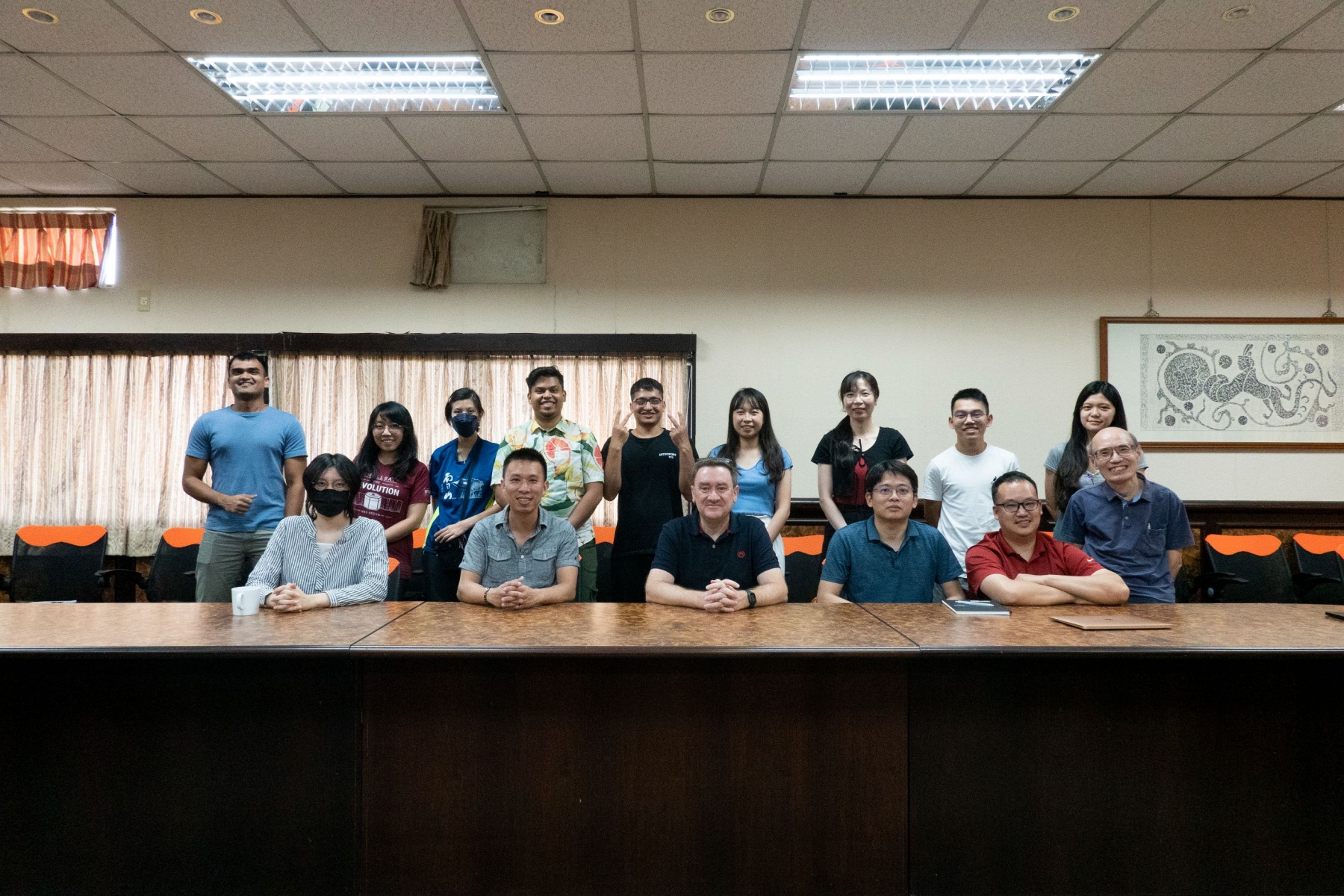活動日期:2023/06/20(二) – 23(五)
活動時間:14:00-15:00
活動地點:國立中央大學健雄館 S4-1013
Special Lecture Series on
“Imageing Black Holes and measuring the Universe: What VLBI can do for you”

Speaker:
Professor Laurent Loinard,
Institute of Radio Astronomy and Astrophysics, National Autonomous University of Mexico
6/20 14:00-15:00
6/21 14:00-15:00
6/22 14:00-15:00
6/23 14:00-15:00
Very Long Baseline interferometry (VLBI) is a radio observing technique that consists in combining the signals from an array of telescopes distributed over hundreds or thousands of kilometers to obtain images with high angular resolution. Indeed, VLBI is currently the technique offering the highest angular resolution in all of astronomy. In the centimeter regime, resolutions of order 1 milli-arcsecond are routinely obtained, while VLBI in the millimeter regime reaches resolutions of order 20 micro-arc seconds. In this series of lectures, I will describe the VLBI technique and illustrate the unique science that it enables with several examples. I will focus especially on the ultra-high precision astrometry that results from multi-epoch VLBI observations. Such measurements have enabled enormous progress in our characterization of our own Milky Way Galaxy (particularly its spiral structure, size scale and kinematics) and allowed the reconstruction of the 6D structure (space + velocity) of individual regions of star-formation. I will also describe how this technique, through the so-called Event Horizon Telescope (EHT), recently enabled the first images of super-massive black holes (at the center of M87 and our Milky Way) at spatial scales comparable with the Schwarzschild radius. Such images place stringent constraints both on theories of gravitation and on the physics of the plasma surrounding the black holes. I will finish the lectures by focusing on the future of VLBI which is very bright indeed. With upgrades currently being developed to the EHT and the next generation Very Large Array anticipated to start operation in about a decade, VLBI is expected to thrive in the next decades, producing micro-arcsecond astrometry and movies of black holes.

